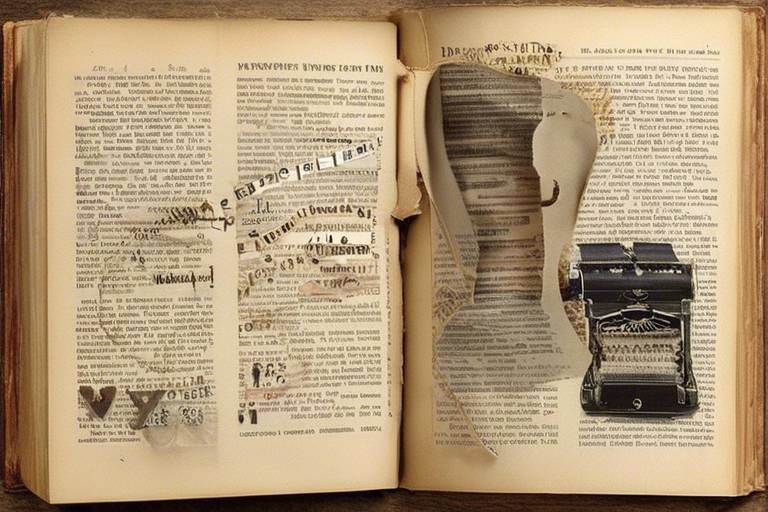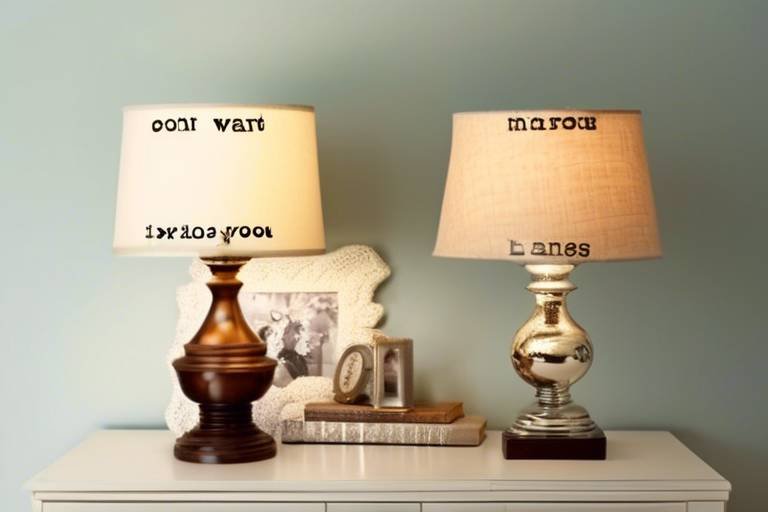Top Upcycling Trends of the Year
Upcycling has become more than just a trend; it’s a movement that’s reshaping our relationship with waste and creativity. As we navigate through a world increasingly concerned about sustainability, the art of upcycling is blossoming into a vibrant tapestry of innovation and style. Imagine taking something deemed worthless and transforming it into a stunning piece of art or a functional item that adds character to your home. This year, we’re seeing some incredible upcycling trends that not only promote environmental consciousness but also encourage us to think outside the box. From fashion to furniture, the possibilities are endless. So, let’s dive into the most popular upcycling trends of the year that are sparking joy and creativity across the globe!
The fashion industry is undergoing a remarkable transformation as it embraces upcycled clothing. This trend involves taking old garments and breathing new life into them, turning what was once considered waste into stylish new pieces. Imagine a pair of worn-out jeans being reimagined into a chic handbag or a vintage dress being transformed into a trendy top. It’s not just about looking good; it’s about making sustainable choices that resonate with consumers who are increasingly aware of the environmental impact of fast fashion. By choosing upcycled clothing, individuals are making a statement about their values, promoting a future where fashion is both beautiful and responsible.
Homeowners are increasingly turning to furniture upcycling to breathe new life into outdated pieces. This trend combines creativity and sustainability, allowing individuals to create unique, personalized home decor that tells a story. Think about that old wooden chair that’s been sitting in your garage for years. With a little paint and some imagination, it can become a centerpiece in your living room. Upcycling furniture not only helps reduce waste but also provides a sense of accomplishment and pride in crafting something beautiful from the old. It’s like giving a second chance to furniture that deserves to be loved again.
When it comes to upcycling furniture, there’s a world of DIY techniques that can be employed to achieve stunning results. Whether you’re painting, reupholstering, or adding new hardware, the options are virtually limitless. For instance, a simple coat of paint can transform a drab piece into a vibrant statement. Reupholstering allows you to choose fabrics that reflect your personal style, while new hardware can give a vintage piece a modern twist. The beauty of DIY furniture upcycling lies in its flexibility; you can tailor each project to fit your vision and home aesthetic.
Selecting the right materials is crucial for successful furniture upcycling. Not only does it affect the durability of the finished piece, but it also influences its overall aesthetic. For example, opting for high-quality paint can enhance the look and longevity of your project. Additionally, using sustainable materials aligns with the values of upcycling, ensuring that your creation is as eco-friendly as possible. Remember, the materials you choose can make all the difference in how your upcycled furniture piece is perceived.
Nature-inspired designs can elevate your furniture upcycling projects, encouraging the use of organic shapes, colors, and textures. Think about incorporating natural wood finishes or earthy color palettes that reflect the beauty of the outdoors. This approach not only creates a harmonious look but also connects your home decor to the environment. By drawing inspiration from nature, you can create pieces that are not only visually stunning but also evoke a sense of tranquility and balance in your living space.
Different styles of upcycled furniture cater to diverse tastes, making it easier for individuals to find inspiration for their projects. Whether you’re drawn to rustic charm, modern minimalism, or industrial chic, there’s an upcycling style for everyone. For instance, rustic upcycled furniture often features reclaimed wood and distressed finishes, while modern styles may incorporate sleek lines and bold colors. Industrial upcycling, on the other hand, embraces raw materials and a more utilitarian aesthetic. The key is to choose a style that resonates with you and reflects your personality.
Home decor enthusiasts are finding innovative ways to upcycle everyday items into beautiful decor pieces. This trend showcases creativity while promoting environmental consciousness, proving that you don’t need to spend a fortune to make your home look fabulous. From turning glass jars into stylish candle holders to repurposing old pallets into rustic wall art, the possibilities are endless. Upcycling not only allows you to express your individuality but also encourages a more sustainable approach to decorating your space.
Artists are increasingly using discarded materials to create stunning artworks, showcasing the transformative power of upcycling. What may seem like trash can be reimagined into valuable pieces of art that provoke thought and inspire change. Imagine sculptures made from scrap metal or paintings created from old newspapers. These works not only highlight the artist’s creativity but also serve as a poignant reminder of the importance of rethinking waste in our society.
Upcycling can also lead to the creation of functional home accessories, such as planters, storage solutions, and lighting fixtures. These pieces enhance both aesthetics and utility, proving that upcycling is not just about making things pretty; it’s about making them practical too. For example, an old ladder can be transformed into a unique bookshelf, while tin cans can become charming planters for your herbs. By incorporating upcycled accessories into your home, you’re not only beautifying your space but also contributing to a more sustainable lifestyle.
Community initiatives focused on upcycling encourage collaboration and creativity, bringing people together to share skills and resources while promoting sustainable practices in local neighborhoods. These initiatives often host workshops, swap meets, and community art projects that inspire individuals to think creatively about waste. Imagine a weekend spent with neighbors, transforming old furniture into new treasures or crafting art from discarded materials. Such activities not only foster a sense of community but also instill a deeper appreciation for sustainability and creativity.
Q1: What is upcycling?
A1: Upcycling is the process of transforming waste materials or unwanted products into new materials or products of better quality or environmental value.
Q2: How can I start upcycling at home?
A2: Start by looking at items you already have that you no longer use. Consider how they can be transformed or repurposed into something new and useful.
Q3: Is upcycling cost-effective?
A3: Yes! Upcycling can save you money by allowing you to create new items from things you already have, rather than purchasing new products.
Q4: Can I upcycle clothing?
A4: Absolutely! Upcycling clothing is a popular trend where you can transform old garments into new stylish pieces through techniques like sewing, dyeing, or patching.
Q5: What are some popular materials for upcycling?
A5: Common materials for upcycling include wood, glass, metal, fabric, and plastic. Almost anything can be upcycled with a little creativity!

Fashion Forward: Upcycled Clothing
The fashion industry is undergoing a radical transformation, and at the heart of this change is the exciting world of upcycled clothing. Imagine taking a pair of old jeans that have seen better days and turning them into a trendy handbag or transforming a vintage dress into a chic, modern piece. This practice not only reduces waste but also promotes a more sustainable approach to fashion that resonates with eco-conscious consumers. As we dive deeper into this trend, it's clear that upcycled clothing is not just a fleeting fad; it’s a movement that is reshaping the way we think about our wardrobes.
One of the most appealing aspects of upcycled clothing is its ability to merge creativity with sustainability. Designers and DIY enthusiasts alike are finding innovative ways to breathe new life into old garments. For instance, many are exploring the art of patchwork, where scraps of fabric from various sources are sewn together to create unique pieces that tell a story. This approach not only minimizes textile waste but also allows for a one-of-a-kind fashion statement that can't be found in mass-produced items.
Moreover, upcycled clothing serves as a canvas for self-expression. Have you ever thought about how your clothing choices reflect your personality? With upcycled garments, you can showcase your individuality in ways that are both stylish and environmentally friendly. Whether it’s through bold colors, unique patterns, or unexpected combinations, upcycled fashion encourages wearers to embrace their uniqueness and stand out from the crowd.
In addition to personal style, upcycled clothing contributes significantly to the circular economy. By extending the lifecycle of textiles, we are reducing the demand for new materials, which often come with a hefty environmental price tag. According to recent studies, the fashion industry is responsible for a significant percentage of global carbon emissions, and by choosing upcycled options, consumers can play an active role in mitigating this impact. In fact, the more we upcycle, the less we contribute to the staggering amounts of waste generated by fast fashion.
As we explore this trend further, it’s important to highlight some of the popular methods used in upcycling clothing:
- Reconstruction: This involves taking apart existing garments and sewing them back together in a new way, creating something entirely fresh.
- Embroidery and embellishments: Adding decorative elements can transform a basic piece into a standout item.
- Color dyeing: Changing the color of a fabric can rejuvenate its look and make it more appealing.
As upcycled clothing gains traction, many brands are jumping on the bandwagon, showcasing their commitment to sustainability while appealing to a growing demographic of environmentally-conscious consumers. Some brands even offer workshops and tutorials, encouraging customers to engage in the upcycling process themselves. This not only fosters a sense of community but also empowers individuals to take charge of their fashion choices.
In conclusion, the upcycled clothing trend represents a significant shift in the fashion landscape, promoting sustainability, creativity, and individuality. As consumers become more aware of the impact of their choices, it’s clear that upcycled clothing will continue to thrive, paving the way for a more sustainable future in fashion.
Q1: What is upcycled clothing?
A1: Upcycled clothing refers to garments that have been creatively transformed from old or discarded items into new, stylish pieces, promoting sustainability and reducing waste.
Q2: How can I start upcycling my clothes?
A2: You can start by gathering old garments that you no longer wear, researching DIY techniques, and experimenting with different methods like sewing, dyeing, or adding embellishments to create unique pieces.
Q3: Is upcycled clothing durable?
A3: Yes, upcycled clothing can be very durable, especially if quality materials are used and the upcycling process is done correctly. However, it's essential to assess each piece individually.
Q4: Where can I find upcycled clothing?
A4: Upcycled clothing can be found at thrift stores, specialized boutiques, and online platforms that focus on sustainable fashion. Additionally, many DIY enthusiasts sell their creations on marketplaces like Etsy.
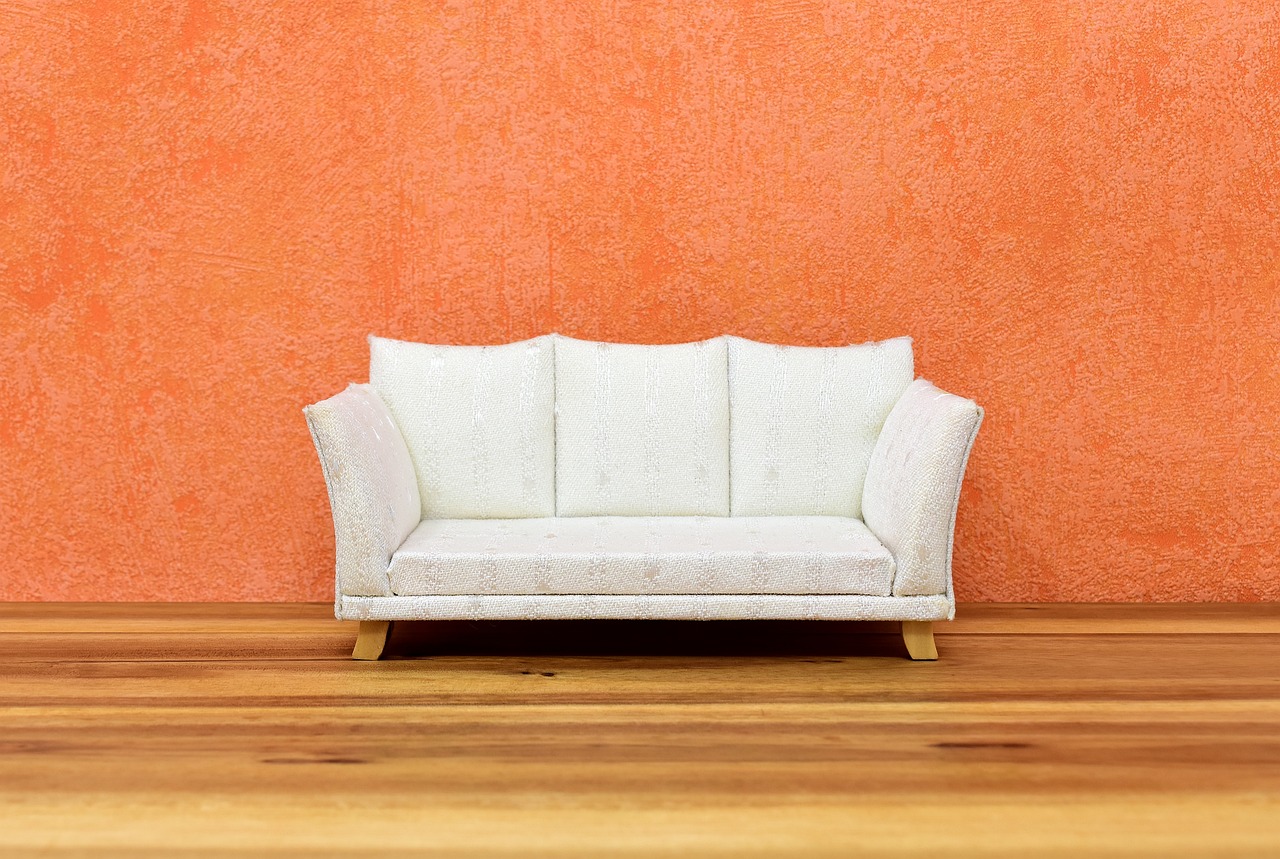
Furniture Makeovers: Reviving Old Pieces
In today’s world, where sustainability is not just a trend but a necessity, upcycling furniture has emerged as a powerful way to breathe new life into old, forgotten pieces. Instead of tossing out that vintage chair or worn-out table, why not give it a makeover? This practice not only helps reduce waste but also allows homeowners to express their creativity and personal style. Imagine transforming a drab, outdated dresser into a stunning statement piece that reflects your unique taste. It's like giving your furniture a second chance at life!
Upcycling furniture is more than just a DIY project; it’s a journey into creativity. Homeowners are now looking for ways to combine their artistic flair with practicality. By using old furniture, you can create a one-of-a-kind piece that tells a story. For instance, an old wooden crate can be repurposed into a rustic coffee table, or a set of mismatched chairs can be painted in vibrant colors to create a cheerful dining set. The possibilities are endless! And the best part? You get to customize every detail to suit your home’s aesthetic.
When diving into the world of furniture makeovers, it’s essential to consider some DIY techniques that can elevate your project. Techniques such as painting, reupholstering, and adding new hardware can drastically change the look and feel of a piece. For example, a simple coat of chalk paint can transform a dull cabinet into a chic storage solution. Similarly, reupholstering a chair with a bold fabric can turn it into a focal point in any room. By mixing and matching these techniques, you can create something truly special.
Here are some popular DIY techniques that can help you on your upcycling journey:
- Painting: A fresh coat of paint can work wonders. Choose colors that complement your existing decor.
- Reupholstering: Change the fabric on your chairs or sofas to give them a completely new look.
- Adding Hardware: Swap out old knobs and handles for new ones to add a modern touch.
But before you start your upcycling adventure, it’s crucial to choose the right materials. Selecting durable materials not only ensures the longevity of your piece but also impacts the overall aesthetic. For instance, if you’re working on a coffee table, consider using reclaimed wood for a rustic look or opt for metal accents for a more industrial vibe. The right materials can make all the difference in achieving the desired outcome.
Moreover, drawing inspiration from nature can enhance your furniture upcycling projects. Think about incorporating organic shapes, earthy colors, and natural textures. A coffee table with a live edge or a chair that mimics the curves of a tree branch can create a harmonious and inviting atmosphere in your home. Nature-inspired designs not only look beautiful but also promote a sense of tranquility and balance.
As you embark on your upcycling journey, it’s helpful to explore different styles of upcycled furniture. Whether you prefer a rustic, modern, or industrial look, there’s something for everyone. Each style offers unique characteristics that can cater to various tastes, making it easier to find inspiration for your projects. Don’t be afraid to mix styles—after all, creativity knows no bounds!
In conclusion, upcycling furniture is a fantastic way to revive old pieces and promote sustainability in your home. It’s not just about reducing waste; it’s about creating something beautiful and meaningful. So gather your tools, unleash your creativity, and start transforming your old furniture into stunning works of art!
Q: What is upcycling?
A: Upcycling involves taking old or discarded items and transforming them into something new and valuable, often with a focus on sustainability.
Q: Can I upcycle any type of furniture?
A: Yes! Almost any type of furniture can be upcycled, from chairs and tables to cabinets and shelves.
Q: Do I need special skills to upcycle furniture?
A: While some projects may require specific skills, many upcycling techniques are beginner-friendly and can be learned through practice.
Q: Where can I find old furniture to upcycle?
A: You can find old furniture at thrift stores, garage sales, flea markets, or even in your own home. Don't forget to ask friends and family if they have pieces they no longer want!
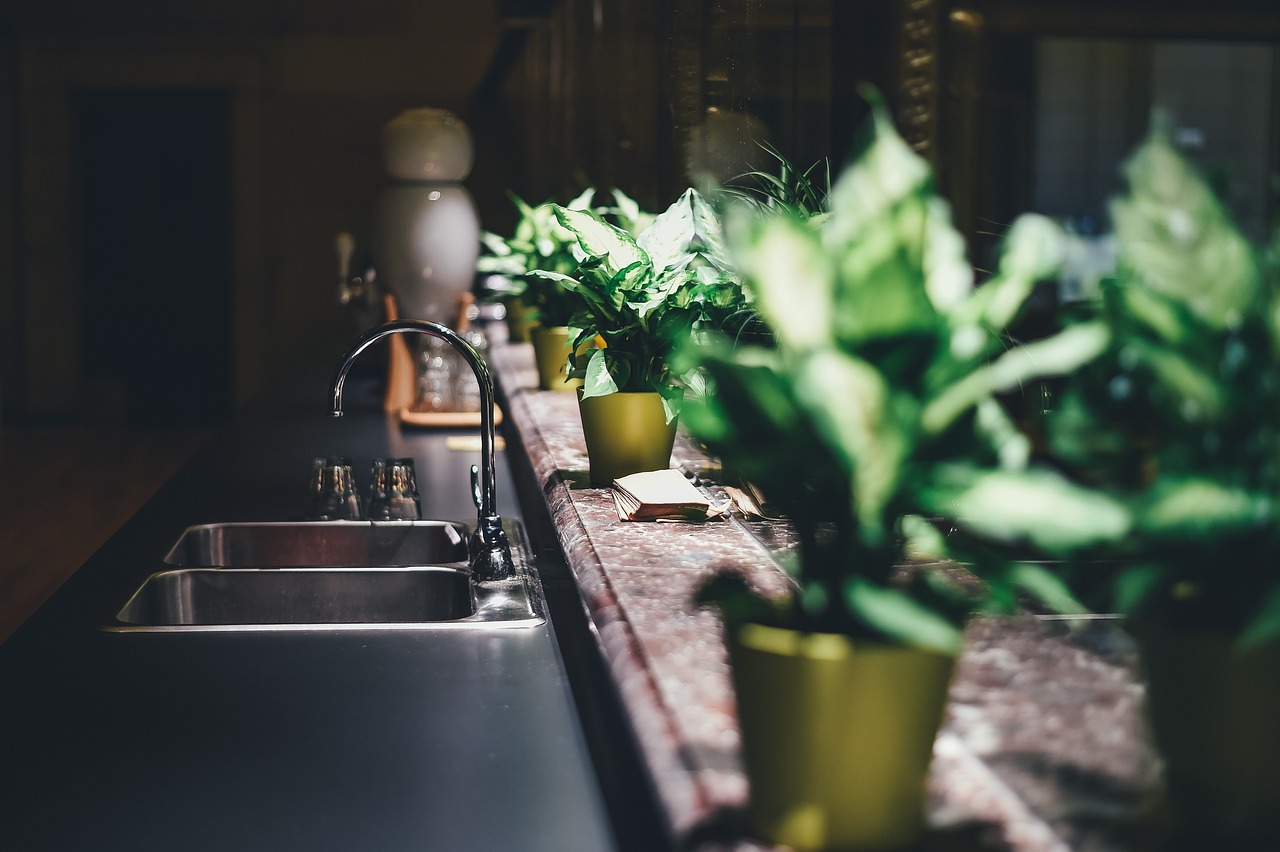
DIY Techniques for Furniture Upcycling
Upcycling furniture is not just a trend; it's a thrilling adventure that allows you to transform old, worn-out pieces into stunning, functional works of art. Imagine walking into your home and seeing a coffee table that was once a tired, scratched-up relic now gleaming with a fresh coat of paint and a unique design. The possibilities are endless! Let’s explore some of the most popular DIY techniques that can breathe new life into your furniture.
One of the most straightforward methods is painting. A new color can completely change the vibe of a piece. Think about how a vibrant turquoise dresser can become the centerpiece of your bedroom or how a soft gray can add a touch of elegance to your living room. When choosing paint, consider using chalk paint for a matte finish or spray paint for a smooth, modern look. Don't forget to prep the surface by sanding it down and applying a primer to ensure the paint adheres well.
Another fantastic technique is reupholstering. This is especially useful for chairs and sofas that have seen better days. By selecting a bold fabric, you can transform a drab piece into a statement item. For instance, a floral fabric can brighten up a vintage armchair, making it a cozy reading nook. The process involves removing the old fabric, adding new padding if necessary, and carefully stapling the new fabric onto the frame. It may sound daunting, but with a little patience and practice, you can create something truly remarkable.
Don't underestimate the power of adding new hardware. Sometimes, all it takes to elevate a piece is a set of unique knobs or handles. Consider swapping out boring drawer pulls with vintage-inspired ones or sleek modern designs. This small change can make a significant impact and give your furniture a fresh, updated look. For example, replacing standard knobs on a cabinet with ornate, antique-style ones can lend an air of sophistication and charm.
If you're feeling particularly creative, think about incorporating mixed media into your project. This could involve adding mirrors, glass, or even metal accents to your furniture. For instance, a wooden table can be enhanced with a glass top, creating a stunning contrast that showcases the wood grain underneath while offering a modern twist. Additionally, using decoupage techniques with patterned paper or fabric can add a unique flair to tabletops or drawer fronts, making them truly one-of-a-kind.
Lastly, don’t forget about the importance of functional upgrades. Why not turn an old dresser into a stylish TV stand or transform a vintage ladder into a chic bookshelf? The key is to think outside the box and envision how you can repurpose items to fit your current needs. This not only reduces waste but also results in a piece that is tailored to your lifestyle.
In summary, the world of furniture upcycling is full of creativity and innovation. Whether you choose to paint, reupholster, add hardware, incorporate mixed media, or repurpose items, each technique opens doors to endless possibilities. So gather your tools, unleash your creativity, and embark on your upcycling journey today!
Q: What tools do I need to start upcycling furniture?
A: Basic tools include a screwdriver, hammer, paintbrushes, sandpaper, and a staple gun. Depending on your project, you may also need a sewing machine for upholstery or a drill for hardware installation.
Q: Can I upcycle furniture without prior experience?
A: Absolutely! Many DIY projects are beginner-friendly. Start with simple tasks like painting or changing hardware, and gradually move on to more complex projects as you gain confidence.
Q: Where can I find furniture to upcycle?
A: Look for items at thrift stores, garage sales, or even your own home. You’d be surprised at what you can transform with a little creativity!
Q: How do I ensure my upcycled furniture is durable?
A: Use high-quality materials and finishes, and properly prepare surfaces before applying paint or fabric. Regular maintenance will also help keep your upcycled pieces looking great for years to come.
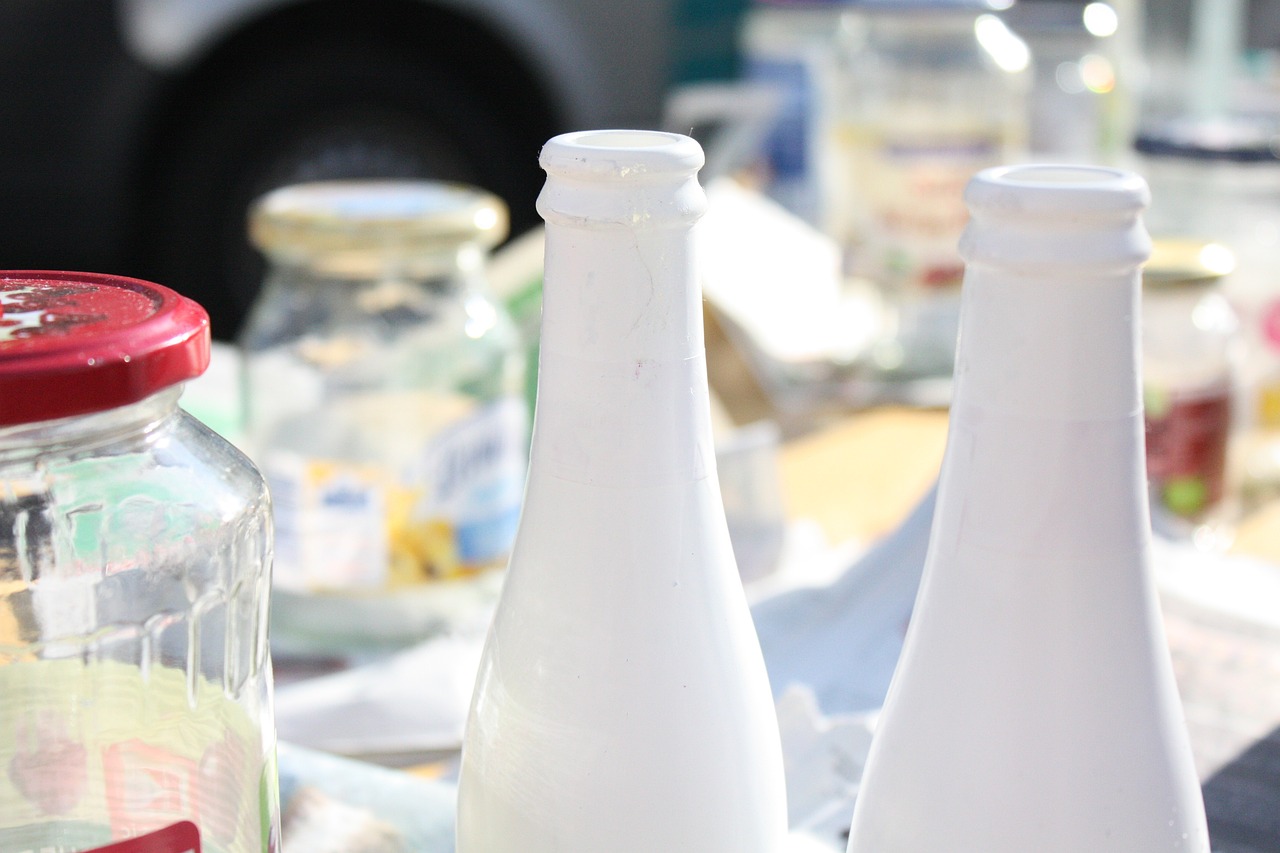
Choosing the Right Materials
When it comes to upcycling furniture, can make or break your project. It’s not just about grabbing whatever you have lying around; it’s about selecting items that will not only enhance the aesthetic appeal but also ensure durability and functionality. Think of it like baking a cake: you wouldn’t use stale ingredients if you want a delicious result, right? Similarly, quality materials are key to achieving a stunning upcycled piece.
First, consider the type of wood you’re working with. Hardwoods like oak or maple are fantastic for furniture because they’re sturdy and can withstand wear and tear. On the other hand, softwoods like pine can be more affordable and easier to work with, but they may not last as long. If you’re unsure, try to find reclaimed wood from old furniture or pallets; it’s not only eco-friendly but often has a unique character that can make your piece stand out.
Next, let’s talk about upholstery. If you’re reupholstering a chair or couch, the fabric you choose will dramatically affect the look and feel of the finished product. Look for durable fabrics that can handle everyday use, such as canvas, denim, or outdoor fabric. These materials not only come in a variety of colors and patterns but are also resistant to stains and fading, making them ideal for high-traffic areas.
Another crucial aspect is the hardware. When you’re adding new knobs, handles, or hinges, opt for materials that complement your overall design. Vintage or antique hardware can add a charming touch, while sleek, modern pieces can give a contemporary flair. Remember, the right hardware can be the cherry on top of your upcycled creation!
Lastly, consider the finishes. Paint and stains can transform the look of your furniture completely. Water-based paints are great for indoor furniture as they are less toxic and easier to clean up. If you’re looking for a rustic vibe, try using a stain that enhances the natural grain of the wood. Don’t be afraid to experiment with different techniques, such as distressing or layering colors, to create a unique finish that reflects your personal style.
In summary, choosing the right materials for your upcycling project is essential. By selecting quality wood, durable upholstery, complementary hardware, and suitable finishes, you’ll not only ensure the longevity of your piece but also create something that you can be proud of. So, roll up your sleeves, gather your materials, and let your creativity shine!
Q1: What types of wood are best for upcycling furniture?
A1: Hardwoods like oak and maple are ideal for durability, while reclaimed wood can add character. Softwoods like pine are easier to work with but may not last as long.
Q2: How do I choose upholstery fabric for my project?
A2: Look for durable fabrics such as canvas or outdoor fabric that can withstand wear and tear, and consider colors and patterns that match your design vision.
Q3: What kind of finishes should I use?
A3: Water-based paints are less toxic and easier to clean, while stains can enhance the natural wood grain. Experiment with different techniques for a unique look!
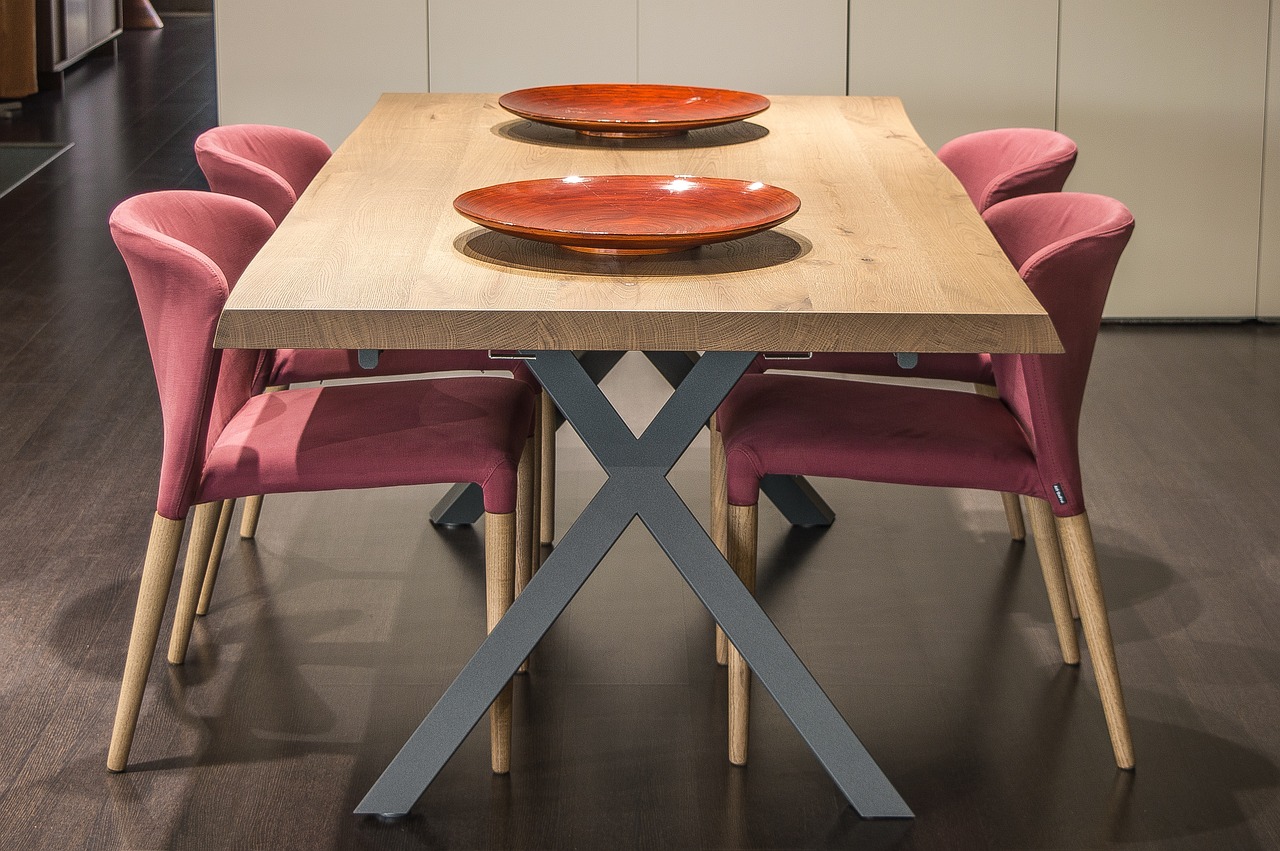
Inspiration from Nature
When it comes to upcycling furniture, drawing inspiration from nature can be a game changer. Imagine transforming an old, worn-out chair into a stunning piece that mirrors the beauty of the great outdoors. Nature offers a plethora of colors, textures, and forms that can breathe new life into your upcycling projects. Think about the earthy tones of wood, the vibrant hues of flowers, or the soothing shades of water. These elements can guide your design choices, making your creations not only unique but also deeply connected to the world around us.
One way to channel nature's inspiration is by incorporating organic shapes into your furniture designs. For example, you might consider curving the edges of a table to mimic the gentle flow of a river or using reclaimed wood to highlight the natural grain patterns that tell a story of their own. Additionally, using colors that reflect the seasons can create a warm, inviting atmosphere in your home. A soft green reminiscent of spring leaves or a rich orange that echoes autumn foliage can transform an ordinary piece into a seasonal statement.
Moreover, textures play a significant role in evoking nature's essence. You can experiment with various materials, such as burlap, jute, or even natural fibers, to add depth and interest to your upcycled furniture. Imagine a rustic coffee table adorned with a woven jute runner, or a set of chairs reupholstered in a fabric that resembles the bark of a tree. These choices not only enhance the aesthetic appeal but also create a tactile experience that resonates with the natural world.
To help you visualize how nature can influence your upcycling projects, here’s a simple table that outlines some ideas:
| Natural Element | Upcycling Idea |
|---|---|
| Wood Grain | Refinish an old table to highlight its natural patterns. |
| Floral Colors | Reupholster chairs with vibrant floral fabrics. |
| Organic Shapes | Create curvy furniture that mimics natural forms. |
| Earthy Textures | Incorporate natural fibers like jute for a rustic feel. |
Incorporating these elements not only enhances the visual appeal of your upcycled pieces but also fosters a sense of harmony and tranquility within your living space. As you embark on your upcycling journey, remember that nature is not just a source of inspiration; it’s a partner in your creative process. So, the next time you look at an old piece of furniture, ask yourself: how can I bring a touch of the natural world into this project? The possibilities are endless, and the results can be truly breathtaking.
- What is upcycling? Upcycling is the process of transforming waste materials or unwanted products into new materials or products of better quality or environmental value.
- How can I start upcycling furniture? Begin by selecting an old piece of furniture, gather your materials, and explore various techniques like painting, reupholstering, or adding new hardware to give it a fresh look.
- Where can I find inspiration for upcycling projects? Nature, online platforms like Pinterest, and local thrift stores can provide great ideas and materials for your upcycling endeavors.
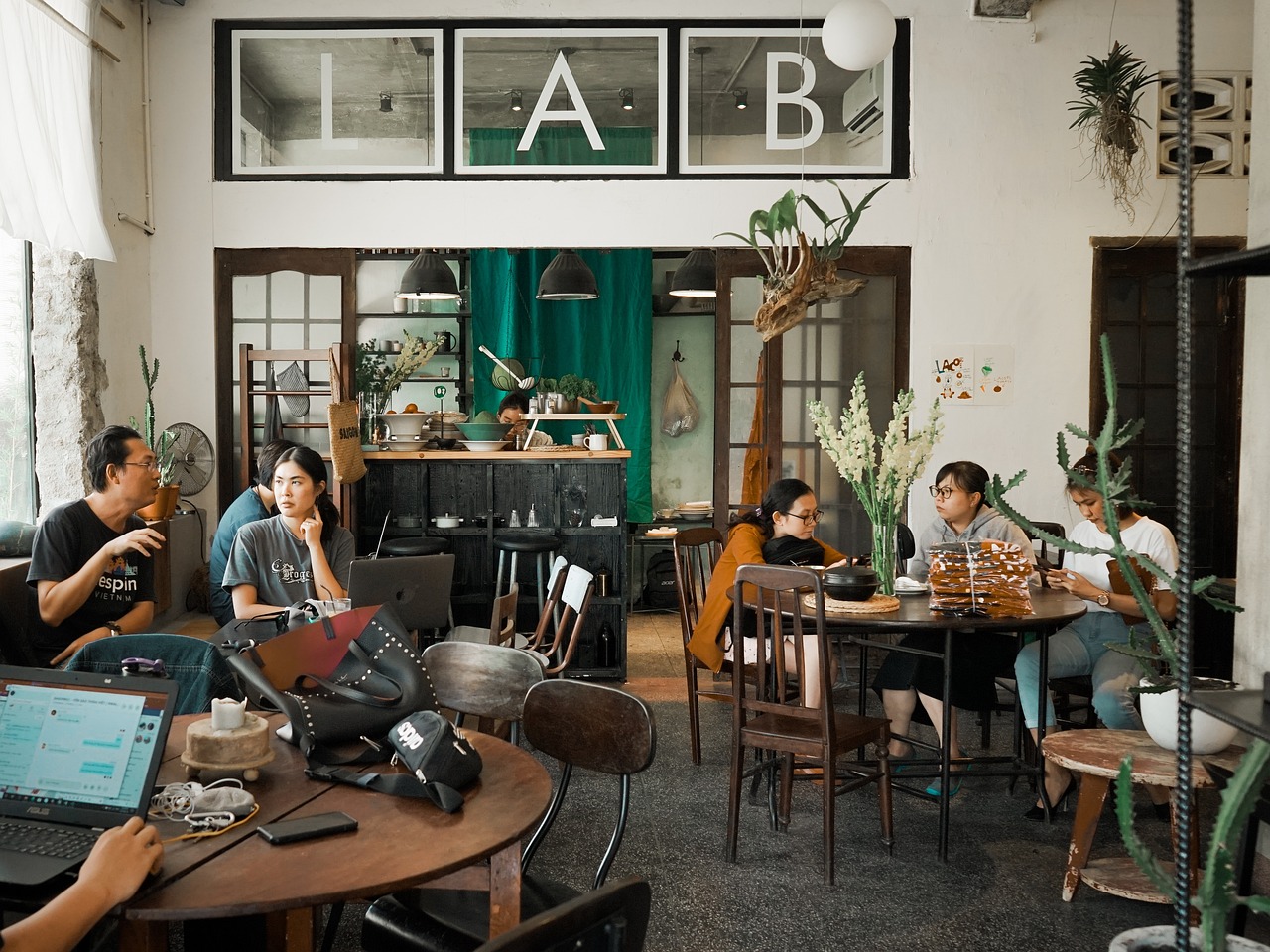
Popular Upcycled Furniture Styles
When it comes to upcycling furniture, the options are as diverse as the imagination itself. Each style offers a unique way to breathe new life into old pieces, allowing homeowners to express their personality and creativity while contributing to sustainability. Let's dive into some of the most popular upcycled furniture styles that are making waves this year.
Rustic Style is all about embracing imperfections and the charm of the past. Think of weathered wood, distressed finishes, and a cozy, farmhouse feel. This style often incorporates natural materials, making it perfect for those who love a connection to nature. Imagine an old wooden chair transformed with a coat of chalk paint and some vintage fabric. It’s not just furniture; it’s a story waiting to be told!
On the other hand, Modern Upcycling focuses on sleek lines and minimalism. This style is perfect for those who appreciate a clean aesthetic. Upcycled pieces in this category often feature bold colors and geometric designs. For instance, an old dresser can be reimagined with a fresh coat of matte paint and new hardware, turning it into a chic statement piece that fits seamlessly into contemporary decor.
Then we have the Industrial Style, which is all about raw materials and a rugged look. This style often incorporates metal elements, reclaimed wood, and a touch of urban flair. Picture an old wooden pallet transformed into a coffee table with metal legs. It’s not just functional; it’s a conversation starter that adds character to any space.
Each of these styles not only enhances the aesthetic appeal of your home but also tells a story of sustainability. By choosing to upcycle, you’re not just decorating; you’re making a statement about your values. Whether you prefer the warmth of rustic charm, the sleekness of modern design, or the edginess of industrial decor, there’s an upcycled furniture style that will resonate with you.
In addition to these styles, many enthusiasts are also blending elements from different categories, creating a unique fusion that reflects their personal taste. This creative mixing can lead to truly one-of-a-kind pieces that stand out in any room. So, whether you're a DIY novice or a seasoned pro, the world of upcycled furniture styles offers endless inspiration for your next project!
1. What materials are best for upcycling furniture?
When upcycling furniture, it's essential to choose materials that are durable and have a good aesthetic appeal. Solid wood is often the best choice, but you can also use metal, glass, and even plastic. The key is to ensure that the materials can withstand wear and tear while still looking great.
2. Can I upcycle furniture without prior experience?
Absolutely! Upcycling is all about creativity and experimentation. Start with simple projects, like repainting a chair or adding new hardware to a dresser. As you gain confidence, you can tackle more complex projects.
3. How do I maintain upcycled furniture?
Maintaining upcycled furniture depends on the materials used. Generally, it’s best to avoid harsh chemicals and opt for gentle cleaning solutions. Regular dusting and occasional polishing will help keep your pieces looking their best.
By embracing these popular upcycled furniture styles, you not only enhance your living space but also contribute to a more sustainable future. So, grab your tools and let your creativity flow!

Home Decor: Creative Upcycling Ideas
In today's world, where sustainability is more than just a buzzword, home decor enthusiasts are stepping up their game by embracing the art of upcycling. This creative movement allows individuals to breathe new life into everyday items, transforming them into stunning decor pieces that not only beautify spaces but also promote environmental consciousness. Imagine turning an old ladder into a charming bookshelf or repurposing glass jars into elegant candle holders. The possibilities are truly endless!
One of the most exciting aspects of upcycling is the sheer creativity it unleashes. You might find inspiration in the most unexpected places—a discarded wooden pallet can easily become a rustic coffee table, while vintage suitcases can be stacked to create a quirky side table. The beauty of upcycling lies in the fact that it encourages you to see potential where others see waste. It’s like being an artist, but instead of a blank canvas, you have a treasure trove of forgotten items just waiting for a makeover.
Moreover, upcycling isn't just about aesthetics; it's also about functionality. Many home accessories can be crafted from upcycled materials, enhancing both the beauty and utility of your space. For instance, old wine bottles can be transformed into beautiful vases, while tin cans can be painted and used as stylish planters. These functional home accessories not only serve a purpose but also tell a story—each piece carries a history, adding character to your home.
As you embark on your upcycling journey, consider the following creative ideas to spark your imagination:
- Furniture Upgrades: Sand down an old table and give it a fresh coat of paint for a modern look.
- Artistic Displays: Create a gallery wall using framed upcycled materials, like fabric scraps or old maps.
- Lighting Solutions: Transform an old chandelier by adding a splash of color or new shades to brighten up your space.
In addition to these ideas, community workshops are popping up everywhere, offering classes on how to upcycle effectively. These gatherings not only provide valuable skills but also foster a sense of community as participants share their creative visions and techniques. Imagine a room full of people, each working on their own upcycling project, exchanging tips and tricks while surrounded by the buzz of creativity. It's a fantastic way to meet like-minded individuals who share your passion for sustainability.
Ultimately, the heart of upcycling in home decor is about imagination and resourcefulness. You don’t need to be a professional designer to create beautiful, functional pieces for your home. With just a bit of creativity and a willingness to experiment, you can turn what others consider trash into treasure. So, gather your old items, put on your creative hat, and let the transformation begin!
Q: What is upcycling?
A: Upcycling is the process of transforming waste materials or unwanted products into new items of better quality or for better environmental value. It’s a sustainable way to reduce waste while encouraging creativity.
Q: Do I need special skills to upcycle?
A: Not at all! Upcycling can be as simple or as complex as you want it to be. Many projects require basic skills, and there are plenty of tutorials available online to help you get started.
Q: Where can I find materials to upcycle?
A: You can find materials at thrift stores, garage sales, or even in your own home! Look for items that you no longer use or that are damaged and could use a new purpose.
Q: Can upcycled items be functional?
A: Absolutely! Many upcycled projects result in functional home accessories, such as furniture, storage solutions, and decorative pieces that serve a purpose while looking great.
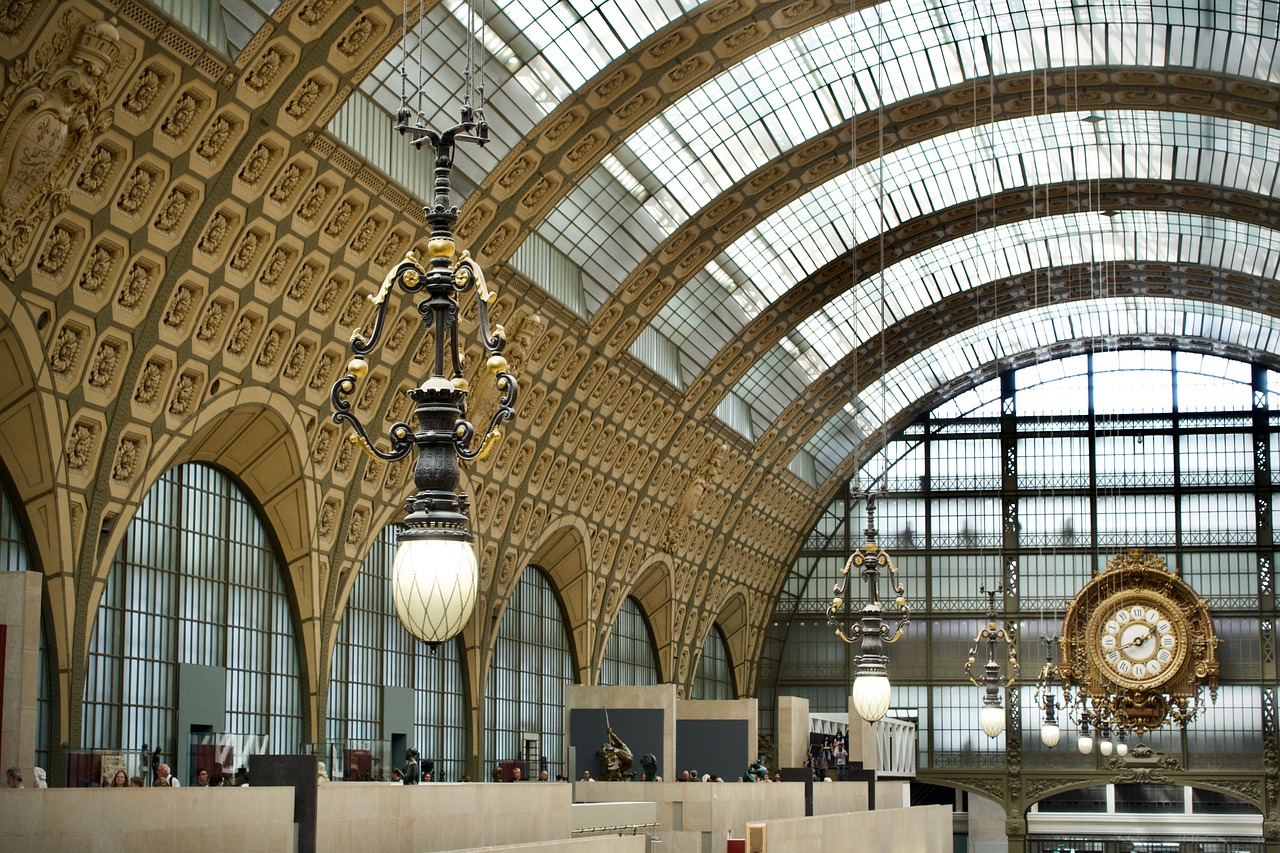
Upcycled Art: Transforming Trash into Treasure
In a world where waste seems to be a growing concern, the art of upcycling has emerged as a beacon of creativity and sustainability. Artists are taking discarded materials—things we might consider trash—and transforming them into stunning works of art. This practice not only reduces waste but also challenges our perceptions of value and beauty. Imagine walking into a gallery filled with vibrant sculptures made from old plastic bottles, or intricate wall hangings crafted from scrap metal. These pieces tell a story, not just of creativity, but of environmental consciousness.
Upcycled art is not just about aesthetics; it is a powerful statement on our consumption habits. By repurposing materials that would otherwise end up in landfills, artists are sending a message about the importance of sustainability. They remind us that beauty can be found in the most unexpected places. For instance, a broken bicycle can become a whimsical garden sculpture, or old newspapers can be woven into a stunning tapestry. The possibilities are endless, limited only by the artist's imagination.
Moreover, upcycled art is accessible to everyone. You don’t need to be a professional artist to create something beautiful from discarded items. Many people are discovering the joy of crafting their own pieces at home. Whether it’s turning glass jars into decorative lanterns or transforming old furniture into unique statement pieces, the DIY aspect of upcycling allows for personal expression and creativity. It’s like giving a second life to objects that have lost their original purpose. This movement has sparked a community of makers who share their projects online, inspiring others to join the upcycling revolution.
To further illustrate the impact of upcycled art, consider the following table showcasing various materials commonly used in upcycling projects:
| Material | Potential Uses | Artistic Examples |
|---|---|---|
| Plastic Bottles | Flower pots, sculptures, chandeliers | Colorful garden installations |
| Old Furniture | Wall art, storage solutions, seating | Refurbished chairs and tables |
| Scrap Metal | Sculptures, garden decor, wall art | Metal animal figures |
| Fabric Scraps | Quilts, wall hangings, bags | Patchwork art pieces |
This table highlights just a few examples of how everyday items can be transformed into artistic masterpieces, showcasing the versatility of upcycled materials. As more artists and creators embrace this practice, we can expect to see a growing movement that not only beautifies our spaces but also promotes a more sustainable lifestyle.
In conclusion, upcycled art is more than a trend; it's a movement that encourages us to rethink our relationship with waste. By transforming trash into treasure, artists are paving the way for a more sustainable future, one creative project at a time. So, the next time you consider throwing something away, pause for a moment. Could that item hold potential for a new life? With a little imagination and effort, you might just discover that you have the makings of a masterpiece right at your fingertips.
- What is upcycled art? Upcycled art refers to the creative process of transforming discarded materials into new art forms, emphasizing sustainability and creativity.
- How can I start creating upcycled art? Begin by collecting materials you would typically throw away, such as plastic bottles, old furniture, or fabric scraps. Let your imagination guide you!
- Is upcycled art expensive to create? Not at all! Upcycled art often uses materials that are free or very low-cost, making it an affordable way to express your creativity.
- Can upcycled art be functional? Yes! Many artists create functional pieces, such as furniture or home decor, that are both beautiful and practical.
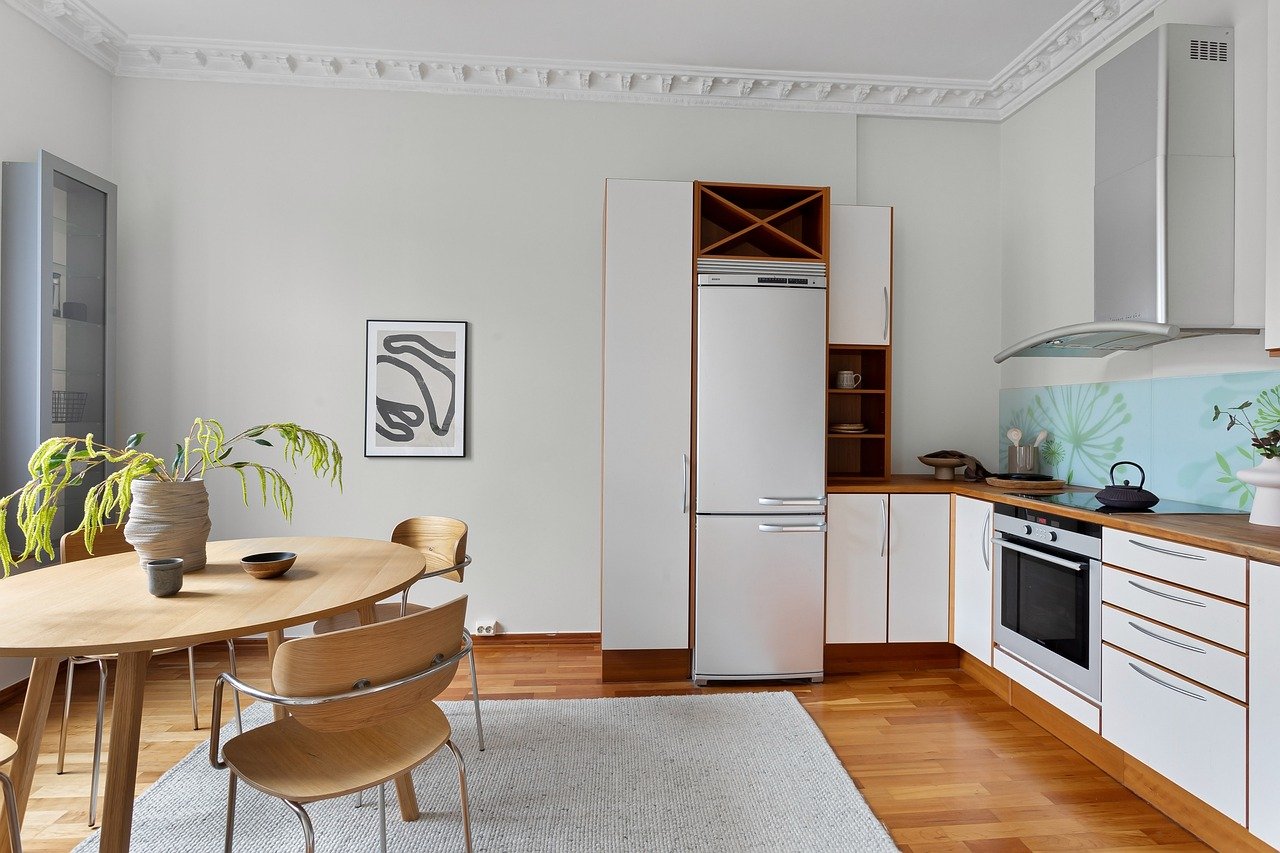
Functional Home Accessories
Upcycling isn't just about transforming old items into something new; it's also about enhancing functionality in our living spaces. Imagine taking an old wooden crate and turning it into a chic coffee table or using discarded glass jars as stylish storage solutions. The possibilities are endless! By creatively reimagining everyday objects, we can craft that not only serve a purpose but also add a unique touch to our decor.
One of the most exciting aspects of upcycling is the ability to merge creativity with practicality. For instance, consider the humble wine bottle. Instead of tossing it in the recycling bin, why not repurpose it into a beautiful lamp or a trendy vase? This not only reduces waste but also provides a conversation starter in your home. Additionally, old furniture can be transformed into multi-functional pieces, such as a bench that doubles as storage or a side table that incorporates a bookshelf.
Here are some examples of functional home accessories you can create through upcycling:
- Storage Solutions: Old suitcases can be stacked and used as a quirky side table that offers hidden storage for blankets or books.
- Planters: Vintage teacups or tin cans can be turned into charming planters, bringing a touch of greenery indoors.
- Lighting Fixtures: Repurposing old lampshades or even using colanders as pendant lights can add a unique flair to any room.
Creating these functional accessories not only beautifies your space but also promotes a sustainable lifestyle. By choosing to upcycle, you are making a conscious decision to reduce waste and minimize your carbon footprint. Plus, the satisfaction of crafting something with your own hands is unmatched! It’s like giving a second chance to items that would otherwise be forgotten or discarded.
As you embark on your upcycling journey, remember to think outside the box. Look around your home for items that may seem useless but can be transformed into something extraordinary. With a little imagination and effort, you can create pieces that reflect your personal style while contributing to a more sustainable world.
Q: What materials are best for upcycling home accessories?
A: Almost any material can be upcycled, but wood, glass, and metal are particularly versatile. Look for items that are sturdy and can withstand alterations.
Q: Do I need special tools to start upcycling?
A: While some projects may require basic tools like a screwdriver or paintbrush, many upcycling projects can be done with minimal equipment. Just get creative!
Q: Can I sell my upcycled creations?
A: Absolutely! Many people successfully sell their upcycled items at local markets or online platforms. Just ensure your creations are safe and functional.
Q: Where can I find inspiration for upcycling projects?
A: Inspiration can come from anywhere—social media platforms like Pinterest and Instagram are great resources. Additionally, local workshops and community groups often share ideas and techniques.

Community Initiatives: Upcycling Together
In today's world, where sustainability is more than just a buzzword, community initiatives centered around upcycling have emerged as a beacon of hope. These programs not only promote environmental consciousness but also foster a sense of community and collaboration. Imagine a neighborhood where people come together, sharing their skills and resources to transform waste into something beautiful—sounds inspiring, right? Well, that's exactly what these initiatives aim to achieve!
One of the most exciting aspects of community upcycling initiatives is the variety of projects they undertake. From organizing community workshops to hosting swap meets, these events encourage individuals to get creative with their discarded items. For instance, a local workshop might focus on turning old glass jars into stunning candle holders or transforming worn-out furniture into chic decor pieces. The possibilities are endless! Not only do these activities reduce waste, but they also empower participants to see the potential in what they once considered trash.
Additionally, these community efforts often incorporate educational elements, teaching participants about the importance of sustainability and the impact of consumerism on our planet. By engaging in hands-on projects, individuals learn valuable skills that they can apply in their own homes. Plus, it’s a fantastic way to meet like-minded people who share a passion for creativity and environmental responsibility.
Moreover, community initiatives can lead to the establishment of local upcycling hubs, where individuals can donate their unwanted items and pick up materials for their own projects. This not only reduces waste but also builds a sense of shared ownership and pride within the community. Imagine walking into a space filled with vibrant colors and textures, all created from upcycled materials, and knowing that you played a part in that transformation!
To highlight the benefits of these initiatives, let's take a look at some key statistics:
| Statistic | Impact |
|---|---|
| Communities with upcycling programs | Reduce waste by up to 30% |
| Participants in workshops | Report increased creativity and resourcefulness |
| Local businesses supporting upcycling | Boost community engagement and economy |
In essence, community initiatives focusing on upcycling not only tackle the issue of waste but also create a vibrant culture of creativity and sustainability. They remind us that we all have the power to make a difference, one upcycled project at a time. So, whether you're a seasoned DIYer or just starting your journey, consider joining a local upcycling initiative. Together, we can transform our communities and the world for the better!
Q: What is upcycling?
A: Upcycling is the process of transforming waste materials or unwanted products into new items of better quality or for better environmental value.
Q: How can I get involved in community upcycling initiatives?
A: You can start by searching for local workshops, joining community groups on social media, or visiting local community centers that host upcycling events.
Q: What types of materials can be upcycled?
A: Almost anything can be upcycled! Common materials include furniture, clothing, glass, plastic, and paper products.
Q: Are there any costs associated with participating in upcycling initiatives?
A: Many community initiatives are free or have a minimal fee to cover materials. It’s best to check with the specific program for details.
Frequently Asked Questions
- What is upcycling?
Upcycling is the process of transforming waste materials or unwanted products into new, higher-quality items. It's not just about recycling; it's about creatively reimagining what can be done with discarded items to give them a new life and purpose.
- Why is upcycling important?
Upcycling plays a crucial role in promoting sustainability by reducing waste and minimizing the need for new resources. It encourages creativity and innovation, allowing individuals to make unique products while also contributing to a healthier planet.
- How can I start upcycling at home?
Starting upcycling at home is easier than you think! Begin by identifying items you no longer use, like old clothes or furniture. Research DIY techniques online, gather your materials, and let your creativity flow. Remember, the goal is to have fun and be resourceful!
- What are some popular upcycling projects?
Popular upcycling projects include turning old t-shirts into tote bags, repurposing wooden pallets into furniture, and transforming glass jars into stylish storage solutions. The possibilities are endless, limited only by your imagination!
- Can upcycled items be sold?
Absolutely! Many people successfully sell their upcycled creations online or at local markets. Just ensure that your products are of good quality and that you promote their unique, eco-friendly appeal.
- What materials are best for upcycling furniture?
When upcycling furniture, look for sturdy materials like wood, metal, and even high-quality plastics. These materials can withstand alterations and provide a durable final product. Don't forget to consider aesthetic elements like color and texture!
- How can I find inspiration for upcycling projects?
Inspiration can come from anywhere! Check out social media platforms like Pinterest and Instagram, visit local thrift stores, or even take a walk in nature. Sometimes, the best ideas come from simply observing the world around you.
- Are there community initiatives for upcycling?
Yes! Many communities have workshops, classes, or events focused on upcycling. These initiatives are great for learning new skills, meeting like-minded individuals, and sharing resources. Check local community boards or social media groups for opportunities!














